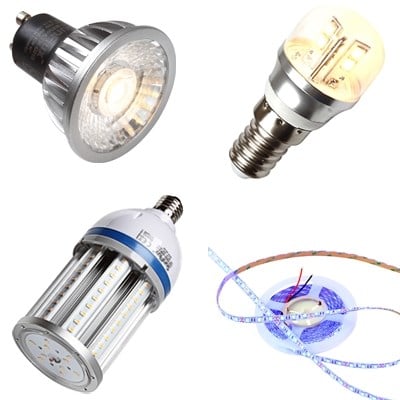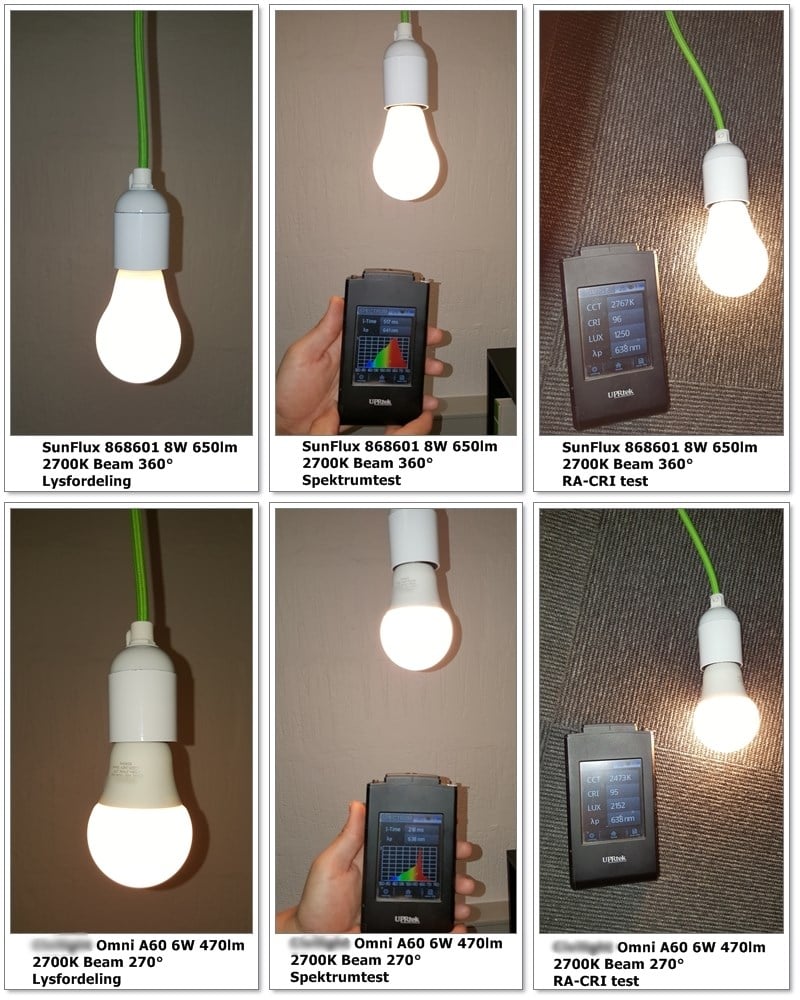There are much money saving by switching to LED, but it can be difficult to choose the right LED bulb. The bulb lasts for years, so it is important to buy the right one from the start. Read more about LED here and get good advice on choosing bulbs.

Ask yourself 5 questions before you shop. LED is an investment. An investment pays you best if you don't regret it. There is a lot to choose from in the market. It can be both an advantage and a disadvantage.
Here are the 5 questions you need to ask yourself before choosing LED bulbs:
- What light color (calf) should the bulbs have?
- What light quality do you need?
- Cushioning - do you need or need it?
- What type of lamp should they be in?
- What does the bulb cost?
The price is actually the last thing you need to ask about ... read on and find out why.
In the good old days, it was easier - but also more expensive

It was easier with the bulbs. Because there were virtually only 2 types and watt consumption was in standard intervals. Either you chose dull or bright light sources and the type of sock you should use. If you were lucky, you came home with the right socket size and the right number of watts.
Here's a tip for choosing the right size socket. The E14 is often called the "small" screw fitting and the E27 is called the "big". If you want to know, even more, E'et stands for Edison. Named after Thomas Edison who invented the bulb with the screw fitting. The subsequent number (E) 14 and (E) 27 is the diameter of the socket in millimeters. There are several sizes, both larger and smaller, eg E40 - which is a 40 mm. wide screw fastening.
There are many other things. Most known are probably GU10 for 230V spots, and for 12V they can have several socket types. Your dealer can help you if you need guidance on choosing the right socket and bulb.
Now for the LED bulbs - because we have to move on to how to choose the right one
Broadly speaking, today's LED bulbs can be tailored for very specific purposes. Today it is just a matter of collecting them from the right components.
Therefore, there is a lot to choose from on the shelves, and therefore also a big difference in which LED light you end up with. It can be both good and less good - and in the worst case completely bad.
Here's a little extra question. Can You SE Light? No, you can't. Lighting does exist only because it is reflected by what is illuminated and because your eye can intercept the reflections. Whether it is from your skin, from the delicious steak from the butcher or maybe from a flowerbed on a spring day. Therefore, it is important which light sources you set to create the reflections.
What light color (calf) should the bulbs have?
It depends a little on where to use them. At work, in the home, perhaps in the shed or outdoors. For work lighting, there is a requirement of a minimum of 80% correct color rendering, which is also called Ra / CRI value. But consider what color the light should have - because it is new to the incandescent bulb which always shone in the same color. Fluorescent lamps can be ordered in many colors for many years.
The light color called Kelvin, named after Lord Kelvin as divided colors in temperatures. A good example is a blacksmith. When the blacksmith heats a piece of iron it is completely black from the start. It first turns red, later white and if it gets really hot it turns into a bluish gas. Incandescent light bulbs generally illuminate with 2700 Kelvin.
At home, it is most common with 2700 to 3000 Kelvin, and a maximum of 4000 Kelvin. The research suggests that higher calf veins close to bedtime can cause sleep problems. Here, the big culprits, in particular, are your television, and the use of tablets, smartphones, etc. They actually deliver light in excess of 4000 Kelvin.
At work, the light must give more energy and therefore approach the daylight. This means that you should choose 3-4,000 Kelvin.
For special needs, you can choose specific daylight sources of 5000 kelvin and above. Examples of special needs could include visual impairment, video and photo production, in the studio, painting cabins, aquariums, etc.
Roughly speaking, we are decorated a little like chickens. We get up and are most active when it is bright when the darkness rises so we creep into our "caves" again, and we sleep best when it is dark. Therefore, use "daylight" where you work.
What light quality do you need?

It is always good to choose the best, but how? And how do you avoid the worst?
The light quality depends on the area to be illuminated. Here you have to look more closely at the color rendering, it is also called the Ra or CRI value.
Remember again that light is invisible until it hits something and your eye catches the reflection.
Sun god Ra has named the Ra index, and CRI is the abbreviation for the Color Rendering Index. The sun god gives a quite good sense because it is always the sun's light, which is the starting point for the number.
In sunlight, all colors in the color spectrum are presented, so the Ra value is 100%. The sun's light is thus optimal, seen with the human eye.
Artificial lighting will always deviate from the natural - except the incandescent lamp which gives 99-100% in Ra value. However, primarily in the yellow/red color spectrum.
Fluorescent tubes and energy saving bulbs only provide approx. 80% correct color reproduction and even in a very low color spectrum. Therefore, it is perceived as very dead. An experiment that illustrates the phenomenon is to take a fresh steak, a fruit bowl or a bouquet of flowers outside in the free sun. Then take it back with a spare light bulb. The difference is pretty clear.
When you switch to LED, it is basically better than the existing fluorescent lamps and energy saving bulbs. Even if the Ra value is only 80%. The LED is better because they typically have a wider range of colors.
Today there are LED bulbs that light up to 97% correct color reproduction. SunFlux is a good example of a manufacturer of LED lighting, which primarily focuses on high light quality and lifelike color reproduction.
Cushioning - do you or do you need it?
The bulb didn't care, but it is different from the LED.
The attenuation of LED is a challenge. The low power consumption and the electronics in the light source are the cause. But it can be done and a serious dealer of LED bulbs will always help you.
LED bulbs last for a long time. Therefore, think a little ahead.
Is there a need to subdue them later and what if you want to use them somewhere else where there is a need for cushioning?
The safe choice is, therefore, to choose dimmable light sources from the start - they cost a little more, but you will probably earn the investment home anyway.
What type of lamp should they be in?
Can you remember your flashlight from childhood? It only shone forward, but you could spread the light a little more when you turned the front part.
LED bulbs light differently. The type of diodes and their location in the light source determine the direction. A diode usually sends the light outwards for approx. 160 ° so that it does not light backward. However, LED bulbs that use the new filaments can better distribute the light.
A good example is a lamp with a more or less transparent screen. Here, a light-emitting LED bulb with 180 ° scattering will create a light and a dark part of the lampshade. If the screen is not transparent, it is typically not a problem.
Therefore, choose LED bulbs based on your lamp type. Should the light source illuminate 360 °, or can you settle for less?
For spots the 38 ° to 40 ° standard is, but one can consider LED bulbs with 60 ° spread if the ceiling height is limited.
For your outdoor lighting, make sure the bulb can withstand it. Also, be aware of closed lamps and LED bulbs generally cannot be recommended (either inside or outside). The electronics cannot withstand too much heat, and therefore the lifetime is reduced in completely closed lamps.
What does the bulb cost?
That doesn't really mean that much. The money comes back home. For LED light always pays. Of course, it pays off best if you are satisfied at first.
Therefore, be critical of your choice. You can probably be tempted by the building market's sign with 5 LED bulbs for 200, - A serious dealer will always ask for your specific need, and take it as the starting point for which light source they will recommend. The most serious dealers test the light sources themselves and publish the results of the test.
Lighting is today an investment of your money, and may the bank find it difficult to refer you to a better-paying investment…?



